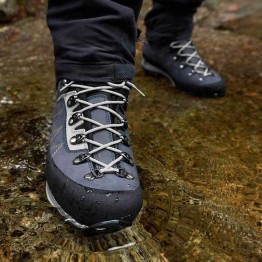The Footwear Guide: Step up Your Hiking Game with the Perfect Pair
Are you ready to take your hiking game to the next level? One essential factor that can greatly enhance your experience on the trails is the perfect pair of hiking shoes. Whether you're a seasoned hiker or just starting out, choosing the right footwear is crucial for comfort, support, and protection during your outdoor adventures. With countless options available, finding the ideal hiking shoes can be overwhelming. But fear not, as we dive into the world of hiking footwear, we'll guide you through the process of selecting the perfect pair that will have you hitting the trails with confidence and ease. So, lace up your boots, tighten your laces, and let's explore the fascinating world of hiking shoes together!
1. Choosing the Right Fit
When it comes to hiking shoes, finding the right fit is crucial for a comfortable and enjoyable outdoor adventure. The last thing you want is to be distracted by blisters or discomfort while exploring nature's wonders. So, how do you choose the perfect pair that fits like a dream?
Firstly, consider the length of your hiking trip. For shorter hikes or day trips, a low-cut hiking shoe is usually sufficient. These shoes provide adequate support and protection for moderate terrains. However, if you're planning a multi-day trek or traversing rugged trails, a mid-cut or high-cut shoe might be a better option. These styles offer additional ankle support and stability for challenging environments.
Next, pay attention to the width of the shoe. Your foot should feel snug, but not cramped. It's essential to have enough room in the toe box to wiggle your toes comfortably, allowing for natural movement while preventing unnecessary pressure on your feet. Remember, a proper fit is not only about length but also about width.
Lastly, don't forget about socks! Choose moisture-wicking and cushioned socks that complement the fit of your hiking shoes. Socks play a significant role in preventing blisters and keeping your feet dry during long hikes. Consider trying different sock thicknesses to find what works best for your feet and the specific hiking conditions you'll encounter.
By prioritizing the right fit based on the length of your hike, ensuring the proper width, and pairing your hiking shoes with suitable socks, you'll be well on your way to finding the perfect pair for your hiking adventures. So lace up, hit the trails, and let your footwear take you to breathtaking destinations!
2. Exploring Different Types of Hiking Shoes
When it comes to hiking shoes, there is a wide range of options to choose from. Each type of shoe offers unique features and benefits that cater to different hiking needs. Whether you are a seasoned hiker or just starting out, finding the right pair of hiking shoes can greatly enhance your outdoor experience.
Hiking Boots: Hiking boots are one of the most popular choices among hikers. These sturdy and supportive shoes offer excellent ankle stability and protection. With their durable construction and rugged soles, hiking boots are designed to handle rough terrains, rocky paths, and uneven surfaces. They are especially recommended for backpacking trips and long hikes where carrying heavy loads is involved.
Trail Runners: For those who prefer a lighter and more flexible option, trail runners are worth considering. These lightweight shoes are designed for speed and agility on the trails. With their low-profile design, trail runners provide excellent traction and responsiveness. They are ideal for day hikes or fast-paced adventures where maintaining a quick pace is important.
Hiking Sandals: When hiking in hot and humid conditions or crossing water bodies, hiking sandals can be a great choice. These open-toe shoes offer breathability and quick-drying properties. With their adjustable straps and sturdy soles, hiking sandals provide comfort and support while allowing your feet to stay cool. However, they might not be suitable for challenging terrains or hikes that require extra protection.
Remember, when choosing hiking shoes, it's important to consider factors such as terrain, weather conditions, duration of the hike, and personal preferences. Trying on different types of hiking shoes and assessing their fit, comfort, and performance will help you find the perfect pair that suits your hiking style.
3. Care and Maintenance Tips for Hiking Shoes
Proper care and maintenance of your hiking shoes are essential to ensure their longevity and performance on the trails. Here are some valuable tips to help you keep your footwear in excellent condition.
 2. Clean after each hike: After a hike, make sure to remove any dirt, mud, or debris from your hiking shoes. Use a soft brush or a damp cloth to gently clean them, paying extra attention to the outsoles and crevices.
2. Clean after each hike: After a hike, make sure to remove any dirt, mud, or debris from your hiking shoes. Use a soft brush or a damp cloth to gently clean them, paying extra attention to the outsoles and crevices.
Air dry thoroughly: To prevent unpleasant odors and prolong the life of your hiking shoes, it's crucial to let them dry completely after use. Avoid using direct heat sources, such as radiators or hairdryers, as they can damage the materials. Instead, remove the insoles and allow them to air dry in a well-ventilated area.
Apply waterproofing treatments: To enhance the water resistance of your hiking shoes, consider applying a waterproofing treatment. Follow watwerproof boots nz provided by the manufacturer and make sure to choose a product suitable for the shoe materials.
Remember, caring for your hiking shoes will not only extend their lifespan but also ensure optimal performance and comfort during your outdoor adventures. Don't neglect these simple maintenance practices, and your footwear will serve you faithfully on many hikes to come.